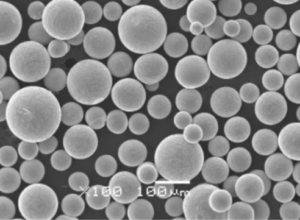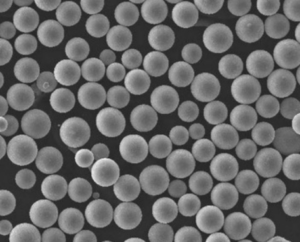Welcome to the fascinating world of powder making equipment technology! This detailed guide will walk you through the ins and outs of this advanced field, touching on everything from specific metal powder models to their applications, compositions, and much more. Whether you’re a seasoned professional or a curious newcomer, this guide has something for everyone.
Overview of Powder Making Equipment Technology
Powder making equipment technology is a cornerstone of many industries, from aerospace to pharmaceuticals. This technology involves the production of fine particles of metal or other materials through various methods such as atomization, chemical processes, and mechanical means. The resulting powders are used in a variety of applications, including 3D printing, coatings, and metallurgy.
Key Components of Powder Making Equipment Technology
- Atomization Equipment: Utilizes gas or water to disperse molten metal into fine droplets, which then solidify into powder.
- Mechanical Alloying: Involves grinding metal powders together to create a uniform mixture.
- Chemical Processes: Methods such as reduction, electrolysis, or precipitation to produce powders.
- Classification and Sieving Machines: Ensure powders are of uniform size and quality.
- Thermal Treatment Furnaces: Used for annealing and sintering powders to enhance their properties.
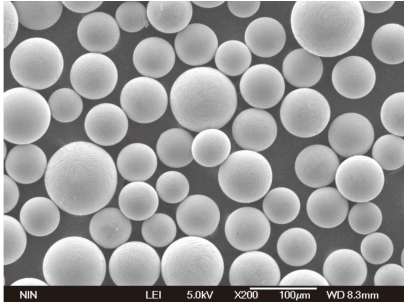
Types of Metal Powders and Their Properties
Different metal powders serve distinct purposes, each with unique properties and applications. Here’s a breakdown of some common types:
| Metal Powder | Composition | Properties | Applications |
|---|---|---|---|
| Aluminum | Pure Al or Al alloys | Lightweight, corrosion-resistant | Aerospace components, automotive parts |
| Copper | Pure Cu or Cu alloys | High conductivity, ductile | Electrical contacts, heat sinks |
| Titanium | Pure Ti or Ti alloys | High strength, biocompatible | Medical implants, aerospace structures |
| Iron | Pure Fe or Fe alloys | Magnetic, strong | Machinery parts, automotive components |
| Nickel | Pure Ni or Ni alloys | Corrosion-resistant, tough | Turbine blades, batteries |
| Stainless Steel | Iron, Chromium, Nickel | Corrosion-resistant, strong | Kitchenware, medical tools |
| Cobalt-Chrome | Cobalt, Chromium | Wear-resistant, strong | Dental implants, cutting tools |
| Tungsten | Pure W or W alloys | High melting point, dense | Filaments, radiation shielding |
| Zinc | Pure Zn or Zn alloys | Low melting point, ductile | Galvanizing, die-casting |
| Silver | Pure Ag or Ag alloys | High conductivity, antimicrobial | Electronics, medical devices |
Composition and Characteristics of Powder Making Equipment Technology
Composition
The composition of powder making equipment technology includes several advanced machines and processes:
- Atomizers: Gas and water atomizers used for creating metal powders.
- Ball Mills: For mechanical alloying and grinding of metal powders.
- Reduction Furnaces: Used in chemical processes to reduce metal oxides to pure metal powders.
- Classifiers: Equipment to separate powders based on size.
- Sintering Furnaces: Used for thermal treatment to enhance powder properties.
Characteristics
- Precision: Ability to produce powders with precise particle size and distribution.
- Scalability: Equipment can be scaled to produce large quantities of powder.
- Versatility: Suitable for a wide range of metals and alloys.
- Efficiency: High production rates and low energy consumption.
- Quality Control: Advanced monitoring systems to ensure consistent quality.
Applications of Powder Making Equipment Technology
Powder making technology is integral to various industries. Here are some key applications:
| Industry | Applications |
|---|---|
| Aerospace | Turbine blades, structural components |
| Automotive | Engine parts, transmission components |
| Medical | Implants, prosthetics, surgical instruments |
| Electronics | Conductive inks, batteries, circuit components |
| Manufacturing | 3D printing, additive manufacturing |
| Coatings | Protective coatings, decorative finishes |
| Energy | Fuel cells, solar panels, nuclear reactors |
| Consumer Goods | Jewelry, kitchenware, tools |
| Defense | Ammunition, armor, precision weapons |
| Industrial Equipment | Machinery parts, cutting tools, wear-resistant surfaces |





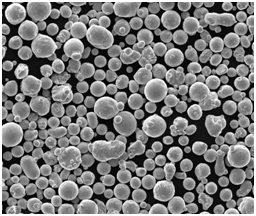
Specifications, Sizes, Grades, and Standards
Specifications and Sizes
Different metal powders have specific specifications and size ranges, tailored for various applications:
| Metal Powder | Particle Size (µm) | Purity (%) | Shape |
|---|---|---|---|
| Aluminum | 10-45 | 99.5 | Spherical |
| Copper | 20-63 | 99.9 | Spherical |
| Titanium | 15-45 | 99.5 | Irregular |
| Iron | 10-75 | 99.8 | Spherical |
| Nickel | 10-50 | 99.9 | Spherical |
| Stainless Steel | 15-45 | 99.7 | Irregular |
| Cobalt-Chrome | 10-30 | 99.8 | Spherical |
| Tungsten | 5-20 | 99.9 | Spherical |
| Zinc | 20-63 | 99.5 | Irregular |
| Silver | 5-25 | 99.99 | Spherical |
Grades and Standards
Different industries require specific grades and standards for metal powders:
| Standard | Description |
|---|---|
| ASTM B928 | Specification for Aluminum Alloys |
| AMS 4998 | Titanium Alloy Powder for Additive Manufacturing |
| ISO 4497 | Metallic Powders – Determination of Particle Size |
| ASTM B330 | Test Method for Particle Size Distribution of Metal Powders |
| ISO 3923 | Metallic Powders – Determination of Apparent Density |
| ASTM F2924 | Standard for Additive Manufacturing Titanium Alloys |
| ISO 3252 | Powder Metallurgy Vocabulary |
| ASTM B214 | Test Method for Sieve Analysis of Metal Powders |
Suppliers and Pricing Details
When it comes to sourcing metal powders, knowing the right suppliers and their pricing can make all the difference:
| Supplier | Location | Metal Powders | Pricing (per kg) |
|---|---|---|---|
| Advanced Powders | USA | Aluminum, Titanium, Iron | $50 – $150 |
| Metal Tech International | Germany | Copper, Nickel, Zinc | $60 – $200 |
| Powders Inc. | UK | Stainless Steel, Silver | $70 – $250 |
| Global Powder Co. | China | Tungsten, Cobalt-Chrome | $80 – $300 |
| Industrial Metalworks | Japan | Aluminum, Iron, Copper | $55 – $170 |
| Precision Powders | India | Nickel, Titanium, Zinc | $65 – $220 |
| Universal Metals | Canada | Cobalt-Chrome, Silver | $75 – $270 |
Comparing Pros and Cons of Powder Making Equipment Technology
When considering powder making equipment, it’s essential to weigh the pros and cons:
| Aspect | Advantages | Limitations |
|---|---|---|
| Atomization | High purity powders, uniform size | High initial setup cost |
| Mechanical Alloying | Can produce unique alloy compositions | Requires extensive milling time |
| Chemical Processes | High purity, specific powder characteristics | Complex processing, safety concerns |
| Classification | Ensures uniform particle size | Additional processing step |
| Thermal Treatment | Enhances powder properties | Energy-intensive |
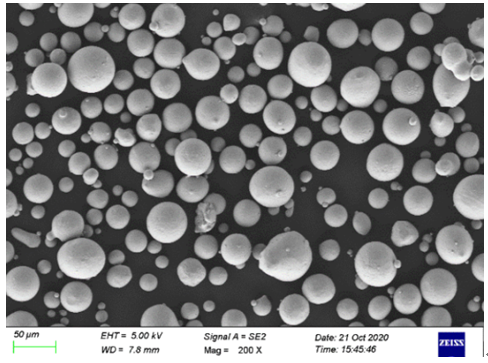
FAQ
What is powder making equipment technology?
Powder making equipment technology involves various methods and machinery used to produce fine metal powders for industrial applications. These methods include atomization, mechanical alloying, and chemical processes.
What are the types of metal powders commonly used?
Common types of metal powders include aluminum, copper, titanium, iron, nickel, stainless steel, cobalt-chrome, tungsten, zinc, and silver. Each type has unique properties and applications.
What industries use metal powders?
Industries such as aerospace, automotive, medical, electronics, manufacturing, coatings, energy, consumer goods, defense, and industrial equipment use metal powders.
What are the advantages of using powder making equipment technology?
Advantages include high precision, scalability, versatility, efficiency, and quality control. These benefits make it suitable for producing high-quality powders for various applications.
How do I choose the right metal powder supplier?
Consider factors such as location, metal powder types offered, pricing, and supplier reputation. Comparing suppliers based on these criteria will help you find the best fit for your needs.
Conclusion
Powder making equipment technology is a dynamic and essential field with vast applications across numerous industries. From aerospace to medical devices, the precision and versatility of metal powders play a critical role in modern manufacturing.
